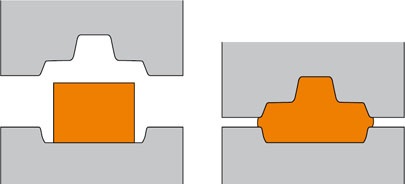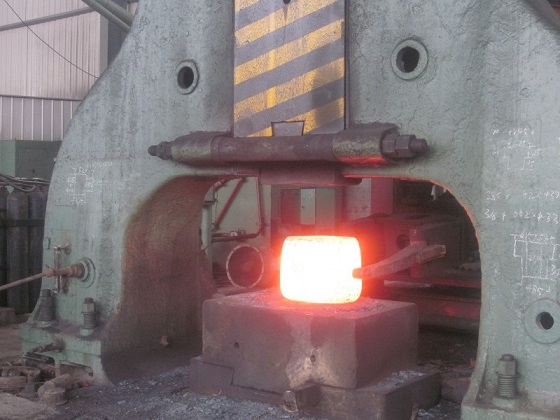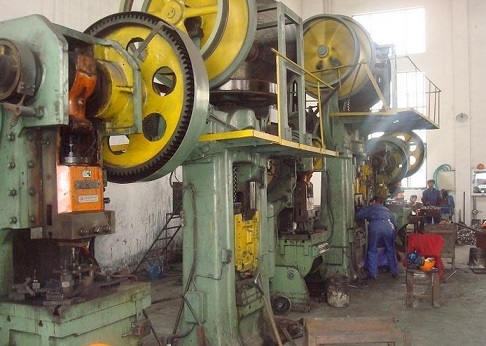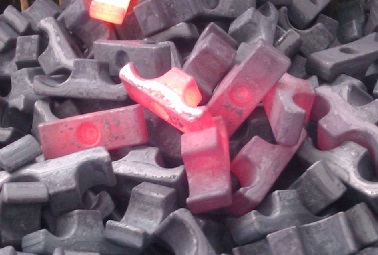Forge definition
Forge Meaning, Forge Definition, Overview of Steel Forging
Forge definition, Forging VS Casting
Forge definition is that a method of hammering or the like to make a metal material in a plastic state into a workpiece having a certain shape and size, and changing its physical properties. Casting definition is that a method in which a metal is melted into a liquid, poured into a mold, cooled and solidified, and cleaned to obtain a casting of a desired shape. Can be made into a variety of shapes and shapes of objects.
Forging is generally used in the processing of forgings of a certain shape and size. Casting is a relatively economical method of forming blanks and is generally used on parts with complex shapes.
Forge definication, also forge meaning is that a process method of using a forging machine to obtain a forged piece with certain mechanical properties, a certain shape and size. Forging and stamping are both plastic working properties, collectively called forging.

Forging is a commonly used forming method in mechanical manufacturing. Through forging, the mechanical properties of the parts are generally better than those of the same material. For the important parts with high load and severe working conditions in the machinery. In addition to the simpler shapes that can be rolled plates, profiles or welded parts, forgings are mostly used.
Cold Forging VS Hot Forging, Wam Forging VS Hot Forging
Forging can be divided into cold forging and hot forging. Cold forging is generally processed at room temperature, and hot forging is processed at a temperature higher than the recrystallization temperature. In some cases, forging is performed while the temperature is still heated, but the temperature does not exceed the recrystallization temperature. This is called warm forging.
The recrystallization temperature of steel is about 460 ° C, but 800 ° C is generally used as the dividing line. Above 800 ° C is hot forging; it is called warm forging or semi-hot forging between 300 and 800 ° C.
Free Forging VS Die Forging
Forging according can be divided into free forging, die forging. The deformation of the billet under pressure is basically called free forging, which is also called open forging. The deformation of the billet in other forging methods is restricted by the die, which is called closed die forging.
1. Free forging

Free forgings are not high in precision and simple in shape. Their shape and size are generally guaranteed by the operator using general-purpose tools, mainly for single-piece and small-batch production. For the manufacture of large machine forgings, free forging is still the only effective method. Free forging has high technical requirements for the blacksmith, poor working conditions and low production efficiency. Forgings that require only a simple universal tool or directly deform the billet between the upper and lower anvils of the forging equipment to obtain the required geometry and internal quality are called free forging.
(1). The basic process of free forging can be divided into drawing, upsetting, punching, bending。
Drawing length: Also called extension, it is a forging process that reduces the cross-sectional area of the billet and increases the length.
Upsetting: a forging process that reduces the height of the blank and increases the cross-sectional area.
Punching: It is a forging method that uses a punch to punch through or through holes on the blank after upsetting.
Bending: A forging process that bends the blank into a prescribed shape using a certain tooling.
(2). Features and applications of free forging
Free forging has greater process flexibility and shorter production preparation time; The productivity of free forging is low, the accuracy of forgings is not high.
Free Forging Application: Free forging is the main production method of large forgings. This is because free forging can break the coarse casting structure in the steel ingot, forge the voids and shrinkage inside the steel ingot, and make the streamlined structure reasonable distribution along the shape of the forging.
2. Die forging


Die forging refers to a forging method in which a blank is molded by a mold on a special die forging device to obtain a forged piece. The forgings produced by this method are accurate in size, have a small machining allowance, and have a relatively complicated structure and productivity. According to the different classification of equipment used: hammer forging, crank press forging, flat forging machine forging and friction press forging. The most commonly used equipment for hammer forging is steam-air die forging hammer.
(1) Compared with free forging, The die forging has the following advantages and disadvantages.
Advantages:
① High production efficiency
② The surface quality is high, the machining allowance is small, there are few or no surplus pieces, the size is accurate, the tolerance of the forging is 2/3 ~ 3/4 smaller than that of the free forging, which can save a lot of metal materials and machining man-hours.
③ Simple operation and lower labor intensity than both free forging and tire die forging.
Disadvantages:
① The weight of die forgings is limited by the capacity of general die forging equipment, and most of them are below 50 ~ 70kg;
② Forging dies require valuable die steel, and the processing of the die cavity is difficult, so the manufacturing cycle of forging dies is long and the cost is high;
③ The investment cost of die forging equipment is greater than that of free forging.
(2) Die Forging Application: Generally used for producing large quantities of forgings.
Forging materials are mainly carbon steel and alloy steel with various components, followed by aluminum, magnesium, copper, titanium, and their alloys. The original state of the material is bar, ingot, metal powder and liquid metal.
Summany
This article introduce the forge definition. the difference of Free forging VS die forging, hot forging vs cold forigng.


